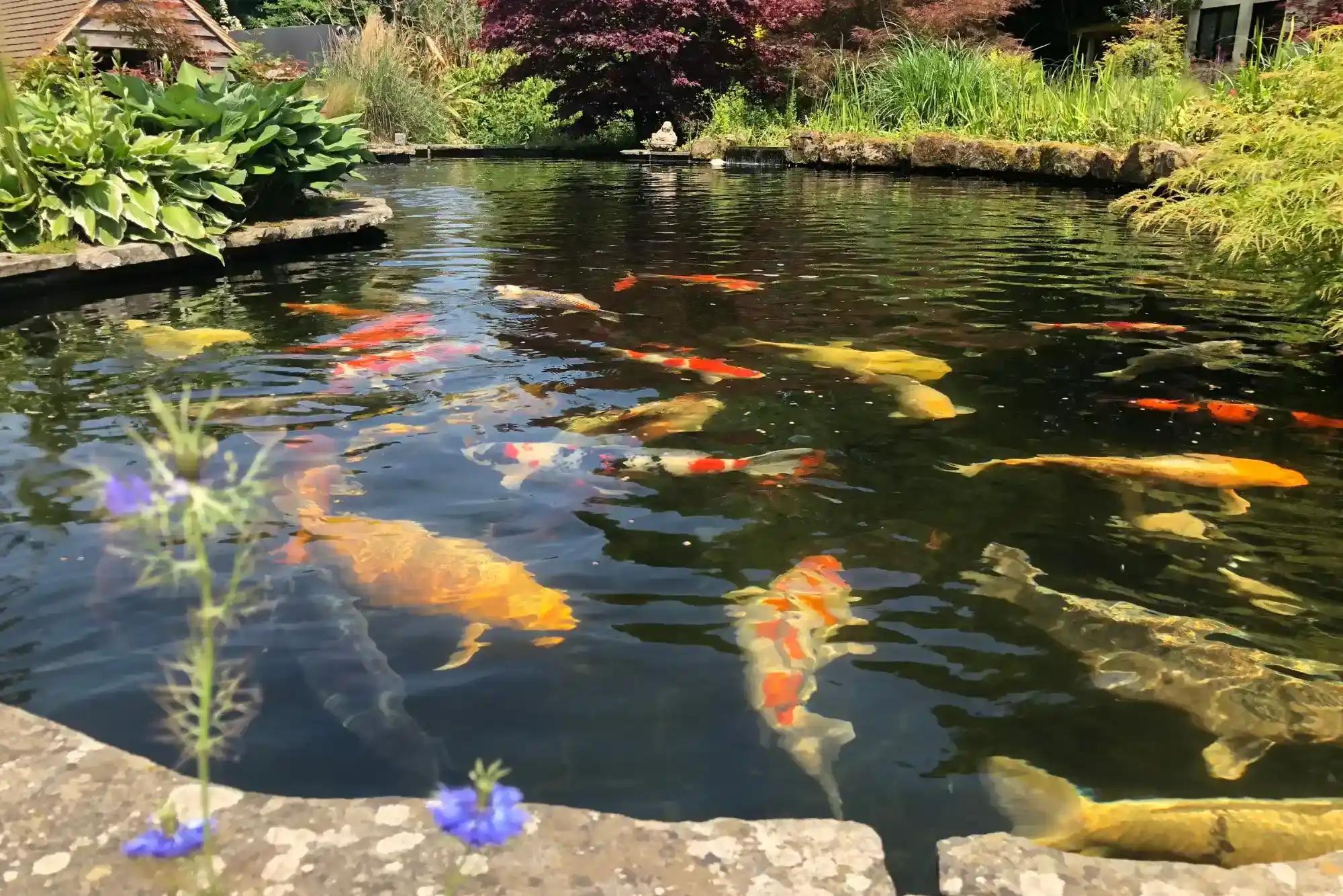

Ponds for koi are a gorgeous and peaceful addition to any garden, giving these beautiful fish a place to live. But keeping the water clean and healthy for them can be tough. This is why biological filters are necessary for such systems. This post will discuss what they are, how they work, and what you can do to make sure your pond stays in good condition.
A biological filter (also known as a biofilter) is a type of water treatment facility that’s home to helpful bacteria. These organisms break down dangerous waste products in the water. An example of what they do is change poisonous ammonia – which comes from fish poop and rotting food among other things – into much less harmful substances like nitrite or nitrate through something called the nitrogen cycle. This process is important to create a good living condition for koi fish which are extremely sensitive to dirty water.
A koi pond bio filter takes advantage of beneficial bacteria’s natural ability to cleanse water as it passes through. It involves several steps:
Those microorganisms inhabit the filter media thereby forming biofilms within the Koi Pond Bio Filter. The effectiveness of the biofilter is directly proportional to the surface area that can be colonized.
There are different types of these filters with their own designs and benefits which include:
These filters contain media which is submerged in water thus providing large areas for bacterial attachment. Some common media used are sponges, plastic bio balls and ceramic rings.
This type allows water to trickle over it while providing a highly oxygenated environment suitable for the growth of bacteria. Usually it is designed as a tower or with a waterfall.
They use sand or small particles that are maintained in suspension by the flow of water; this constant movement creates extensive surface area for bacterial colonization.
Utilize moving media in water to form an active bacterium area. These filters are very proficient and self-purifying.
The proper care of the biofilters is necessary for their efficiency and durability:
Though biofilters do not require frequent cleaning, it is important to remove debris and surplus waste that might block the filter media. Do not clean them too much as this can disrupt the useful bacteria colonies.
Regularly check for ammonia, nitrite, and nitrate levels in the water so as to confirm whether the biofilter is working well enough or not. If sudden spikes occur, it may signal a problem with your biofilter system.
See to it that there is an appropriate flow rate through the biofilter. Bacteria will be washed away if the speed is too high, while little oxygenation might take place in case it moves too slowly.
In the winter, the bacteria can slow down, and it is important to maintain high water quality by adjusting feed times and checking it regularly.
A Koi Pond Bio Filter is a crucial part of the filtration system in a koi pond. It is important for koi fish health and quality water. By knowing how they work and maintaining them well, people with ponds can show off the beauty of these animals as well as create a peaceful environment around them. These ponds will be attractive if owners invest in good biofilters which are serviced appropriately because this leads to healthy dazzling koi.

How Dubai’s Top 10 Interior Designers Are Shaping Global Luxury

Choosing Favorites From 1,000+ Online Games

Transforming Precision Strikes in Modern Warfare

Fishing in Dubai on a Rented Yacht: From Setting Sail to a Fresh Catch

Choosing Favorites From 1,000+ Online Games

Transforming Precision Strikes in Modern Warfare

The Lakes Dubai: Why Residents Prefer the Midea Breezeless E Series